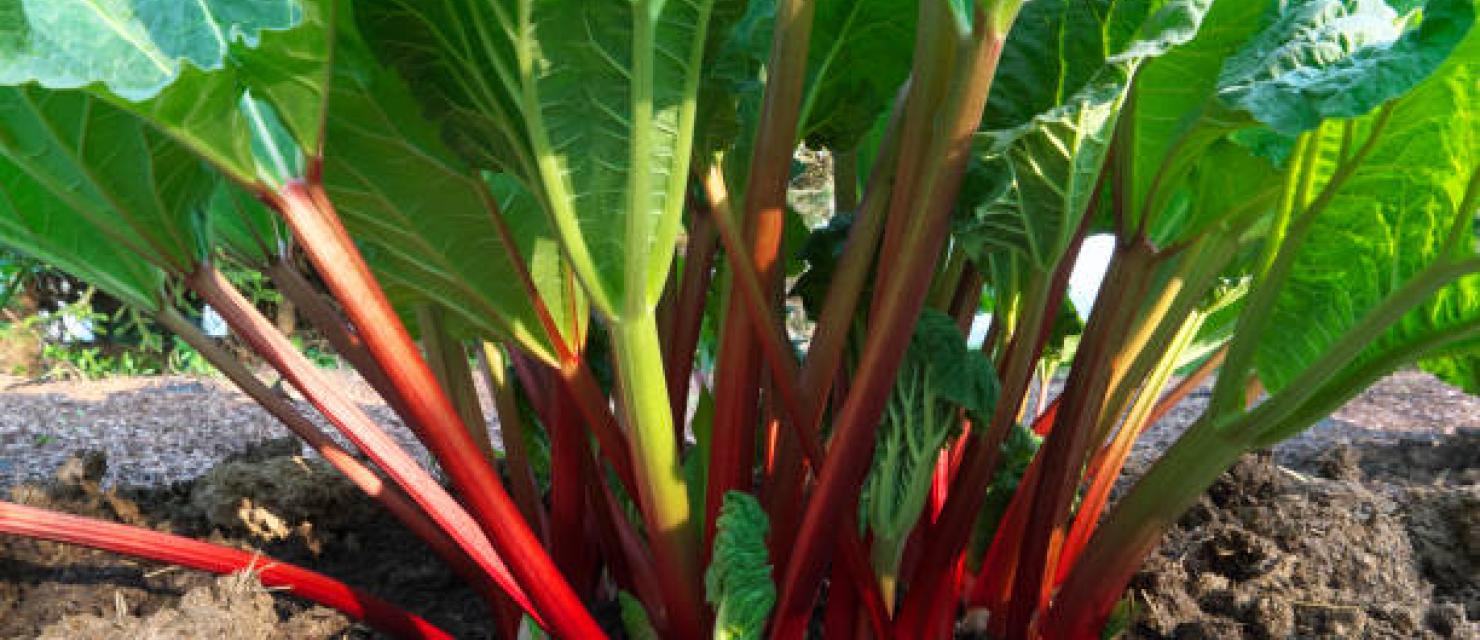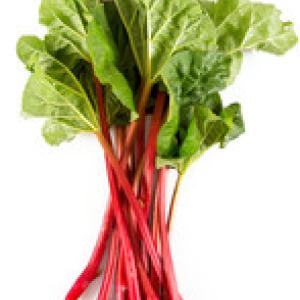Start indoors in early spring and transplant or direct sow 8 weeks after the last frost date. Rhubarb needs full sun. Optimal soil temperature is 16-25°C (60-75°F). Seeds take 5-10 days to sprout. Sow 2cm (1″) deep. Choose a spot that will allow for large plants which will come back each year.
Rhubarb is cold hardy and drought tolerant. After growth stops in the fall, the plants go dormant, and require a period below 4°C (40°F) to stimulate good spring bud growth. Plants should receive compost and a new layer of mulch each fall to promote new growth the following spring
About Rhubarb:
Rhubarb is the fleshy, edible stalks (petioles) of species and hybrids (culinary rhubarb) of Rheum in the family Polygonaceae, which are cooked and used for food.[2] The whole plant – a herbaceous perennial growing from short, thick rhizomes – is also called rhubarb. Historically, different plants have been called "rhubarb" in English. The large, triangular leaves contain high levels of oxalic acid and anthrone glycosides, making them inedible. The small flowers are grouped in large compound leafy greenish-white to rose-red inflorescences.
The precise origin of culinary rhubarb is unknown. The species Rheum rhabarbarum (syn. R. undulatum) and R. rhaponticum were grown in Europe before the 18th century and used for medicinal purposes. By the early 18th century, these two species and a possible hybrid of unknown origin, R. × hybridum, were grown as vegetable crops in England and Scandinavia. They readily hybridize, and culinary rhubarb was developed by selecting open-pollinated seed, so that its precise origin is almost impossible to determine.[3] In appearance, samples of culinary rhubarb vary on a continuum between R. rhaponticum and R. rhabarbarum. However, modern rhubarb cultivars are tetraploids with 2n = 44, in contrast to 2n = 22 for the wild species.[4]
Although rhubarb is a vegetable, it is often put to the same culinary uses as fruits.[5] The leaf stalks can be used raw, when they have a crisp texture (similar to celery, although it is in a different family), but are most commonly cooked with sugar and used in pies, crumbles and other desserts. They have a strong, tart taste. Many cultivars have been developed for human consumption, most of which are recognized as Rheum × hybridum by the Royal Horticultural Society.[6]
This article uses material from the Wikipedia article "Rhubarb" which is released under the https://creativecommons.org/licenses/by-sa/3.0/
Trade rhubarb seeds online from members of Redhouse Greenhouse.

